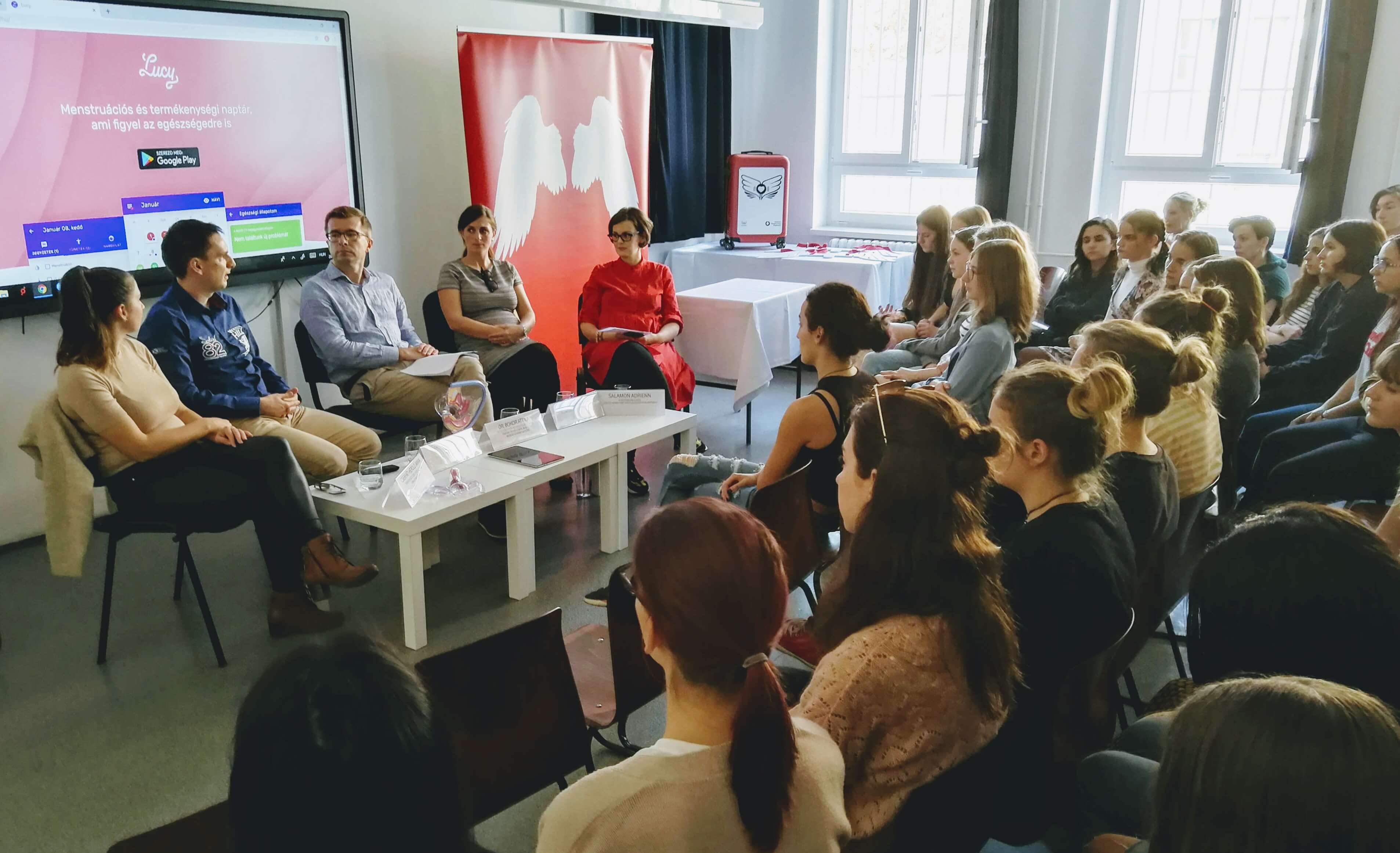Lucy - Reducing gynecological diagnosis times
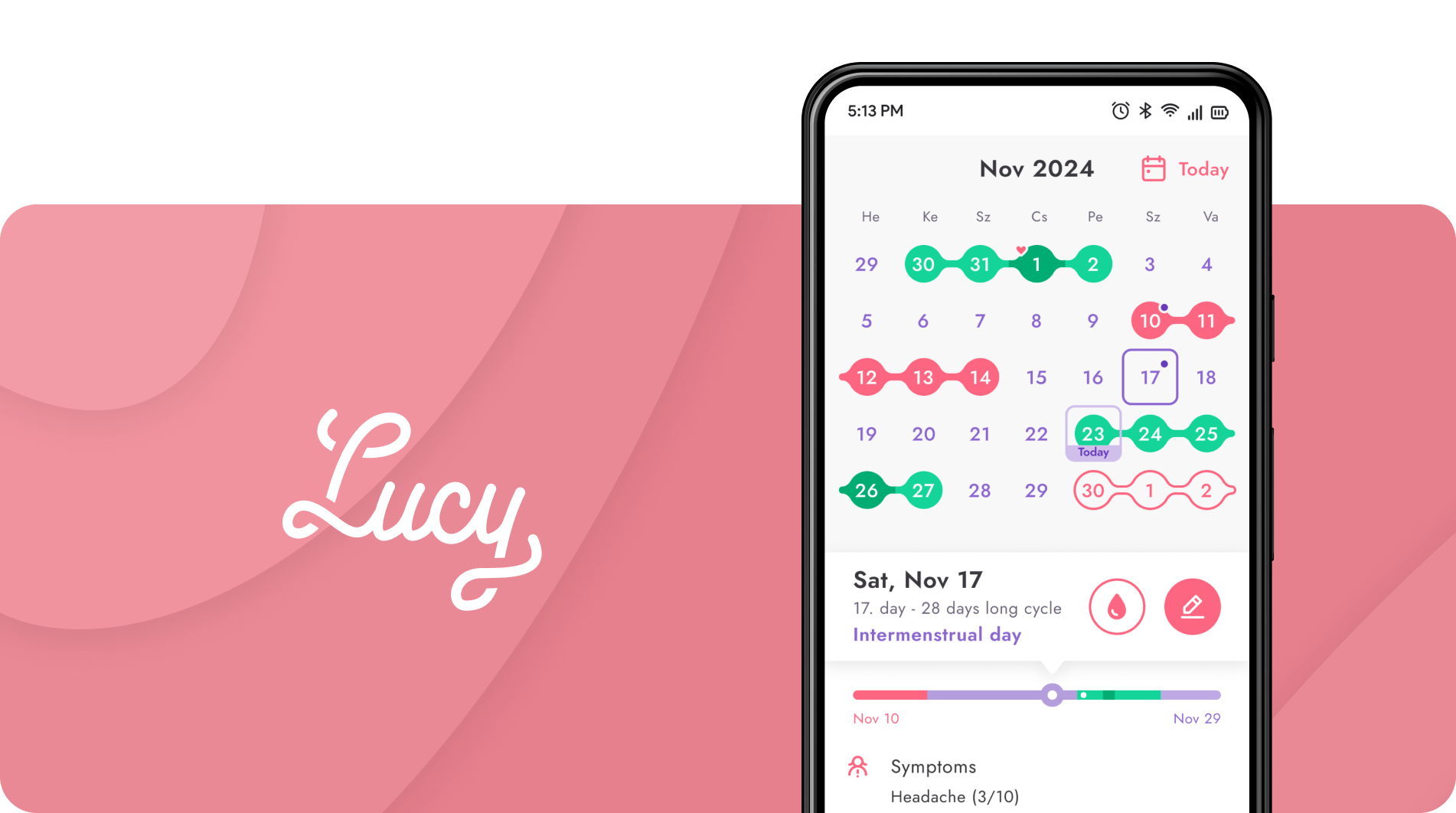
Lucy is a period and ovulation calendar with gynaecological problem detection. The application is available at hellolucy.app for Android and iOS.
The challange
1 of 10 women is affected by some severe gynaecological problems like Endometriosis or PCOS. That’s 190.000.000 people in the world. These diseases sharply decrease the quality of life and can cause infertility. The average detection time takes four years in Hungary, seven years in Germany, eight years in the UK and nine years in the US. This is because there is no medical test for these problems. A surgical procedure can only prove the state but only in the late stage when the patient already has acute symptoms. There are weaker signs in the earlier stage which are often ignored, mistreated, or not recognized. Only surgery could detect the problem in time… but who would do it to look into if you have it or not?
We wanted to catch the problem in the early stage with symptom analysis. That’s why we created a period calendar from a medical perspective. The symptoms are more specific, and they are in synchrony with the gynaecological practice. There is no other app on the market targeting this issue. All the other applications are concentrating on fertility or period prediction only without any medical conclusion.
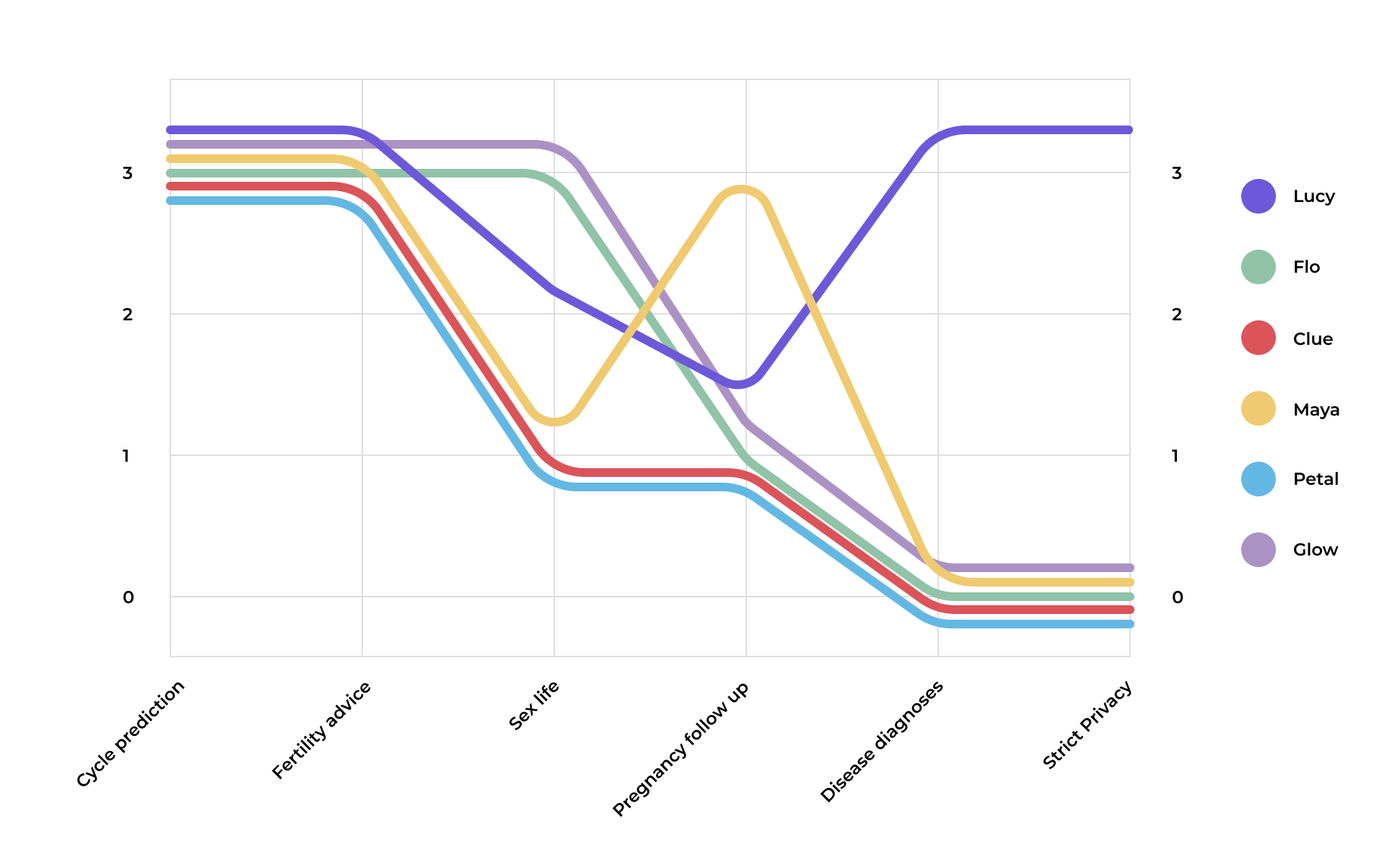
My role and the scope
Our team is made of an Android developer, a medical advisor, a marketing manager and me as a product designer. We started to work on Lucy in 2018.
A typical journey from suffering to treated problem
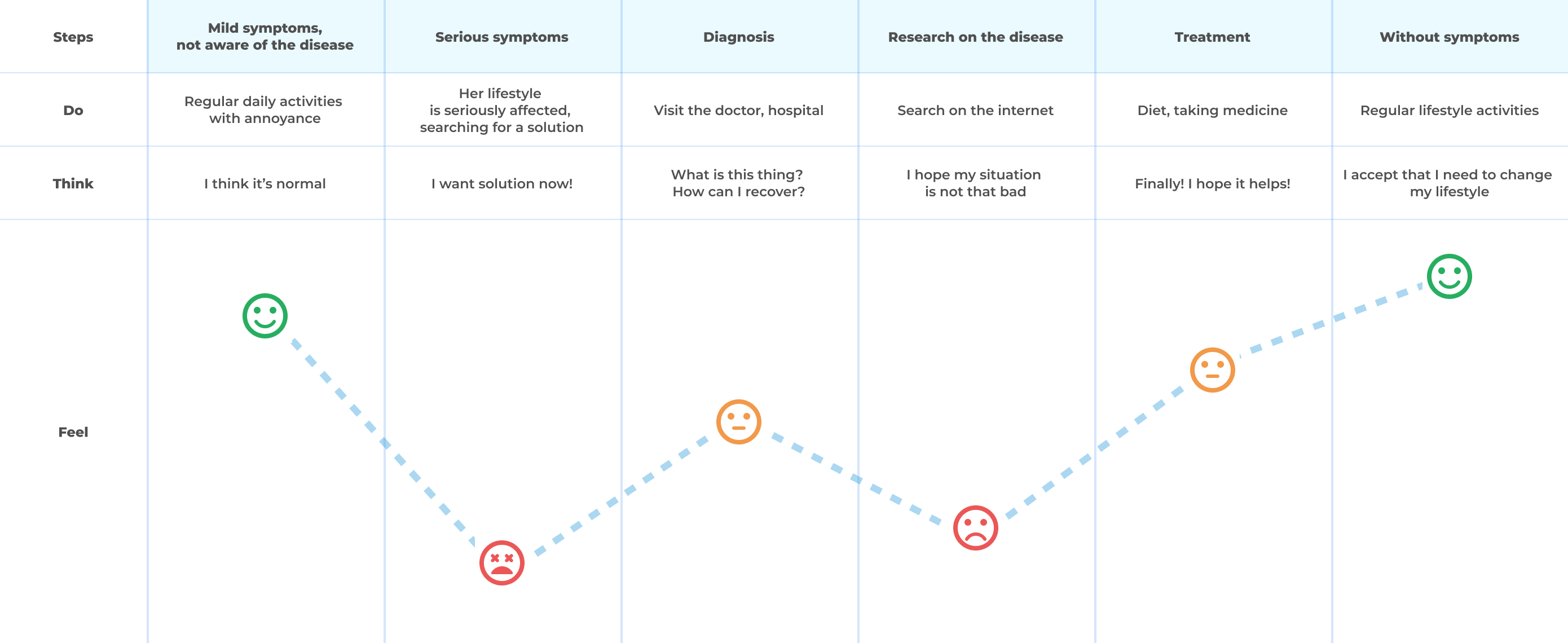
We did a lot of interviews with women having Endometriosis, PCOS and other types of diseases to find out the standard stages, challenges, motivations.
I visited doctors with my constant stomach problems and painful menstruation for eight years, but they couldn’t help me. One of my friends asked if I have Endometriosis. She recommended a specialist. She was right. After the treatment, my symptoms were gone after eight years of suffering.
My partner and I wanted a baby for so long, but I couldn’t conceive although we tried a lot of treatments. Finally, we broke up. I was devastated. After several years it turned out I have Endometriosis. The surgery and the therapy helped me, and eventually, I got pregnant with my new partner.
I thought having painful menstruation is a question of luck. I thought I was just unlucky, and it’s a healthy thing laying on the ground in a fetus pose in pain. Some friends said they had similar problems. Nobody told me it’s not healthy.
We aimed to detect the problem in the early stage, before any surgery or having severe symptoms like infertility or unbearable pain. Logging and analysing daily logs of symptoms can have a tremendous effect on early discovery.
After the diagnosis, education is another crucial point. We can provide medically correct disease descriptions to prevent reading horror stories on the internet in the research stage.
Lucy can help in the treatment stage with logging pills taking and other activities. It helps the cooperation with the gynaecologist and increases the effectivity of the treatment.
Closed group testing with MVP
Testing a prototype and real-life usage can be very different, especially if we design a tool that is used every day. So we decided to go for a minimal logging tool without any diagnostic function, where we can learn from data entries and user feedback. We decided to develop a basic android app for this.
Scannable list of days and notes to help planning life and activities
I don’t want to go on holiday when I have my period. I need to see well ahead these days.
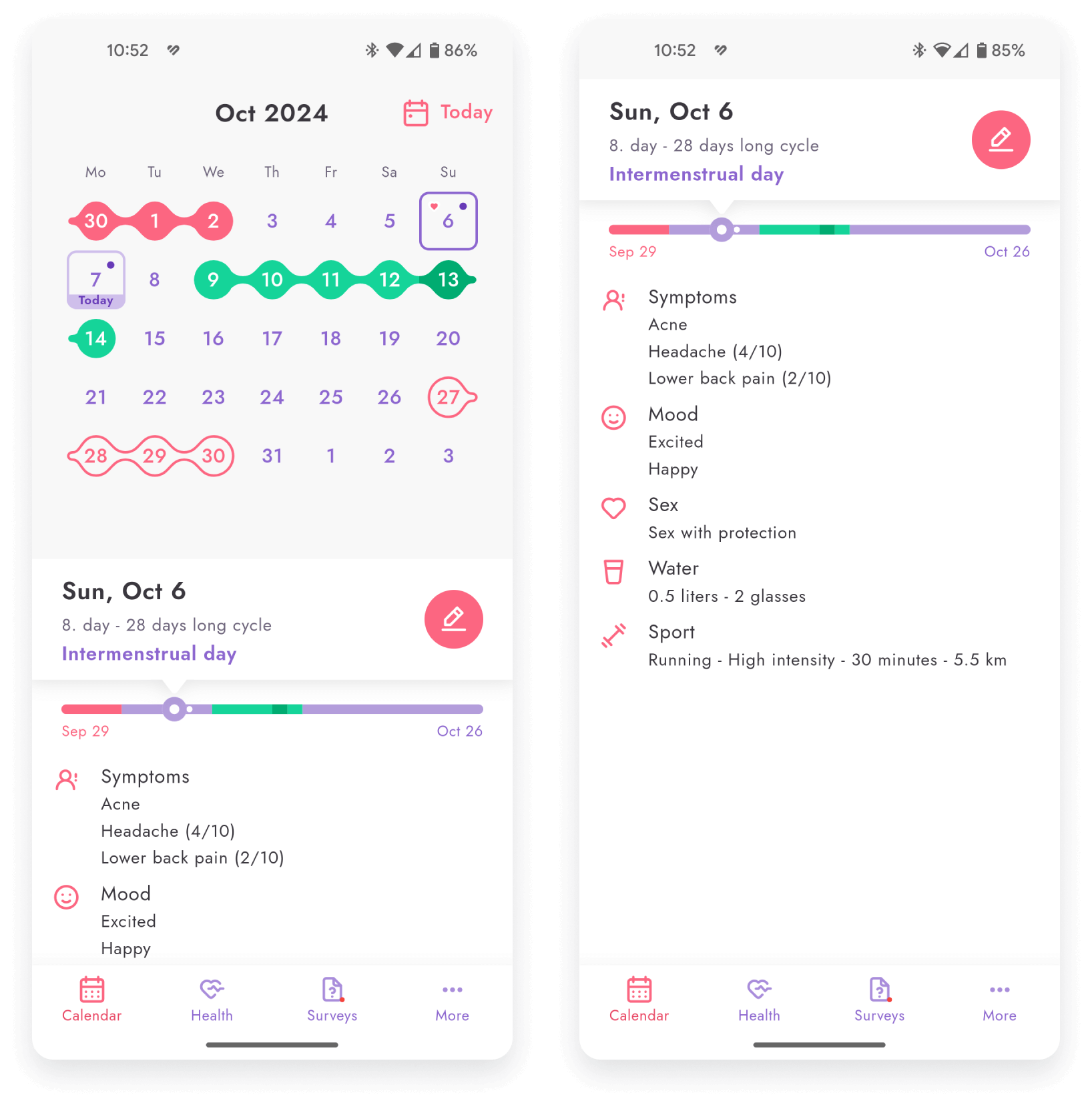
I designed a conventional calendar and a list view to solve this problem. Each has its pros and cons, so we decided to keep them both until we have more data about their real-life usage. We ended up keeping the conventional calendar view.
Finding out what users want to log
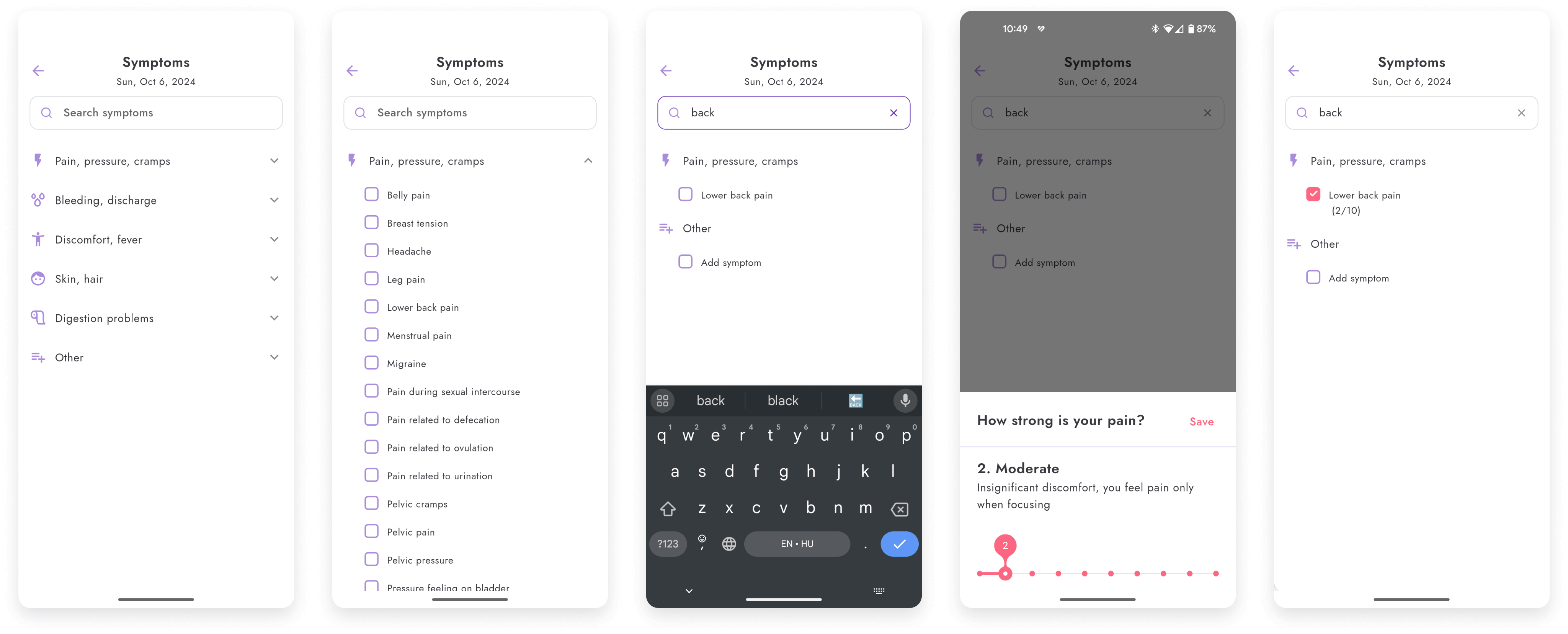
We added a bunch of symptoms and grouped them, but we added a free text form. With this method, we could catch what they miss from the app. And we could see what they don’t find in the list, so they type in instead. Based on their input, we added new symptoms and arranged the symptoms into alphabetical order. We have also made it easy to find any symptom using the search function.
Adding relevant daily notes fast

We collected the most popular note types from our users and watched our competitors.
Reducing subjectivity in pain levels for more comprehensible data for diagnosis
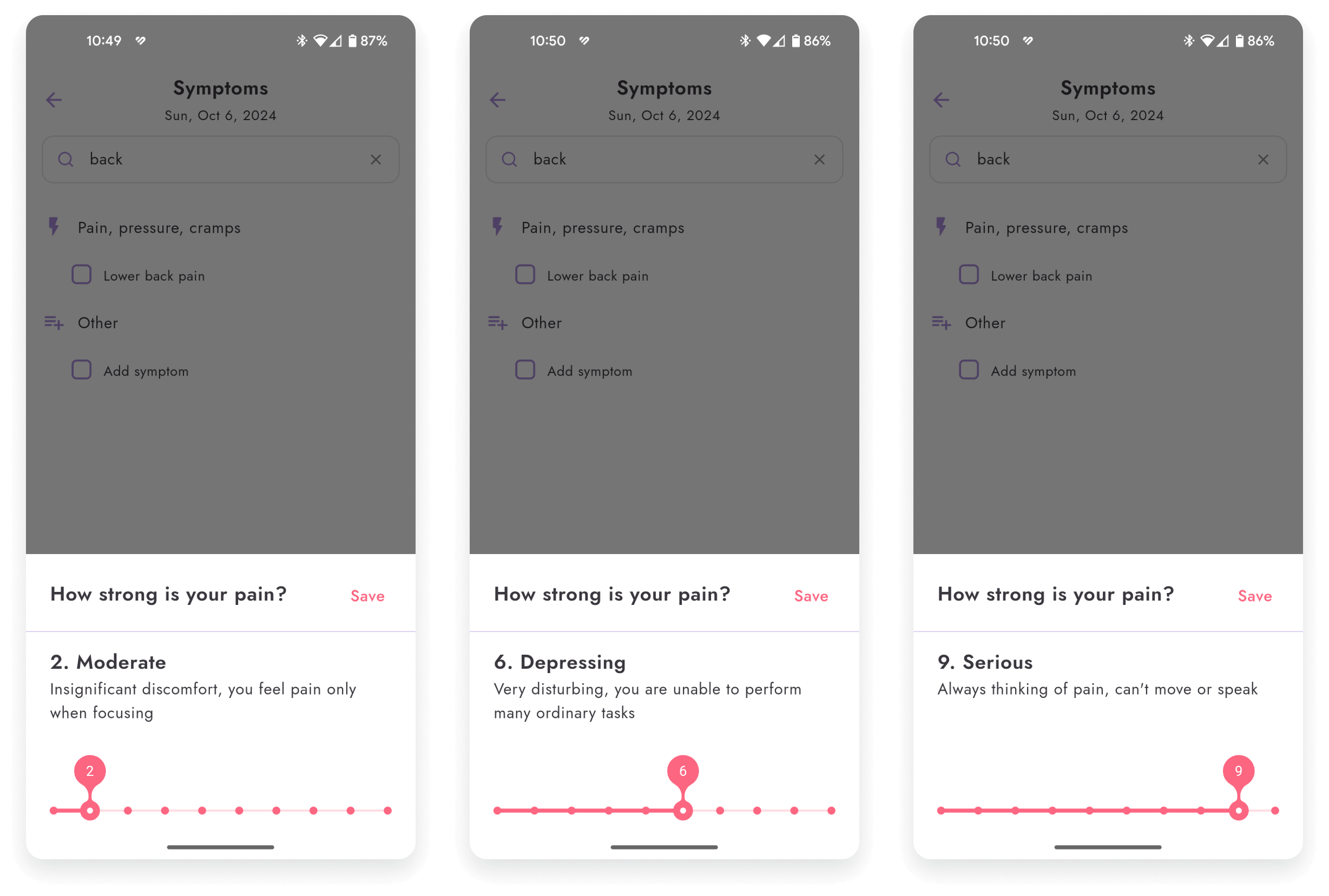
Pain levels are important indicators of potential problems. Users have to define their pain level when they add a symptom with pain. But pain is a very subjective topic.
I researched on the topic of how to define pain levels and what are the medically approved systems are in use. We created a unique slider for this input.
Giving a name and examples to a specific pain level from 1 to 10 helped our users to define their state more objectively and set the correct level.
Setting the pain level is very easy now. I never knew what these numbers meant.
Helping the diagnosis process and warning carefully if the user can have a potential problem
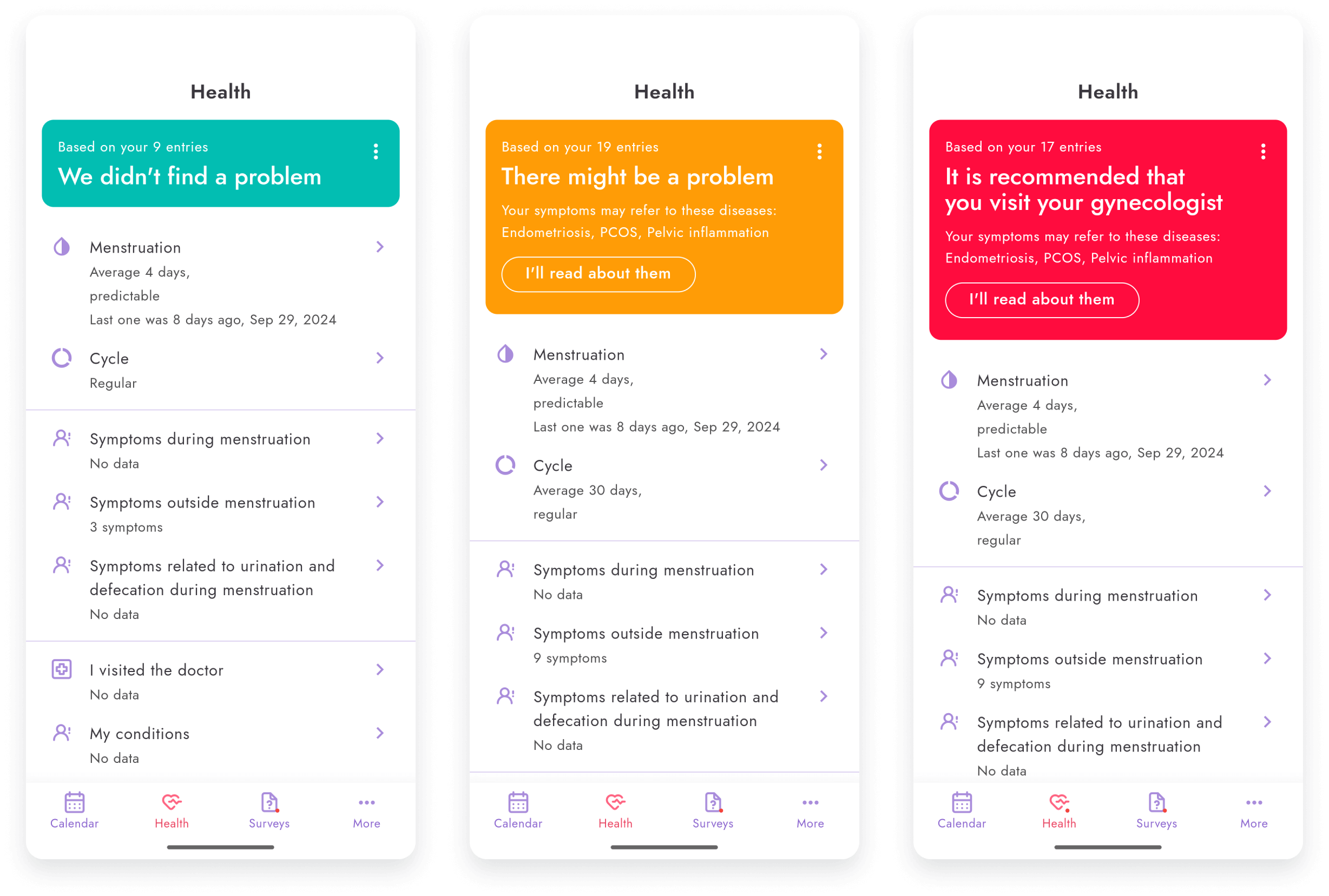
I interviewed gynaecologists to find out what are the most important indicators of potential problems. I designed the Health summary page showing only the relevant information to speed up the diagnosis time.
Besides helping the diagnosis process, we want to help the medical research. We collect and analyse the anonymous data to find new connections and create a better diagnosis method.
When Lucy finds a medical problem based on the user’s data analysis, we had to be cautious not to scare the user or sound like an accurate diagnosis because Lucy can’t say such a thing legally. We consulted with doctors for finding the right message and tested with users.
Prevent misinformation and helping to find a specialist
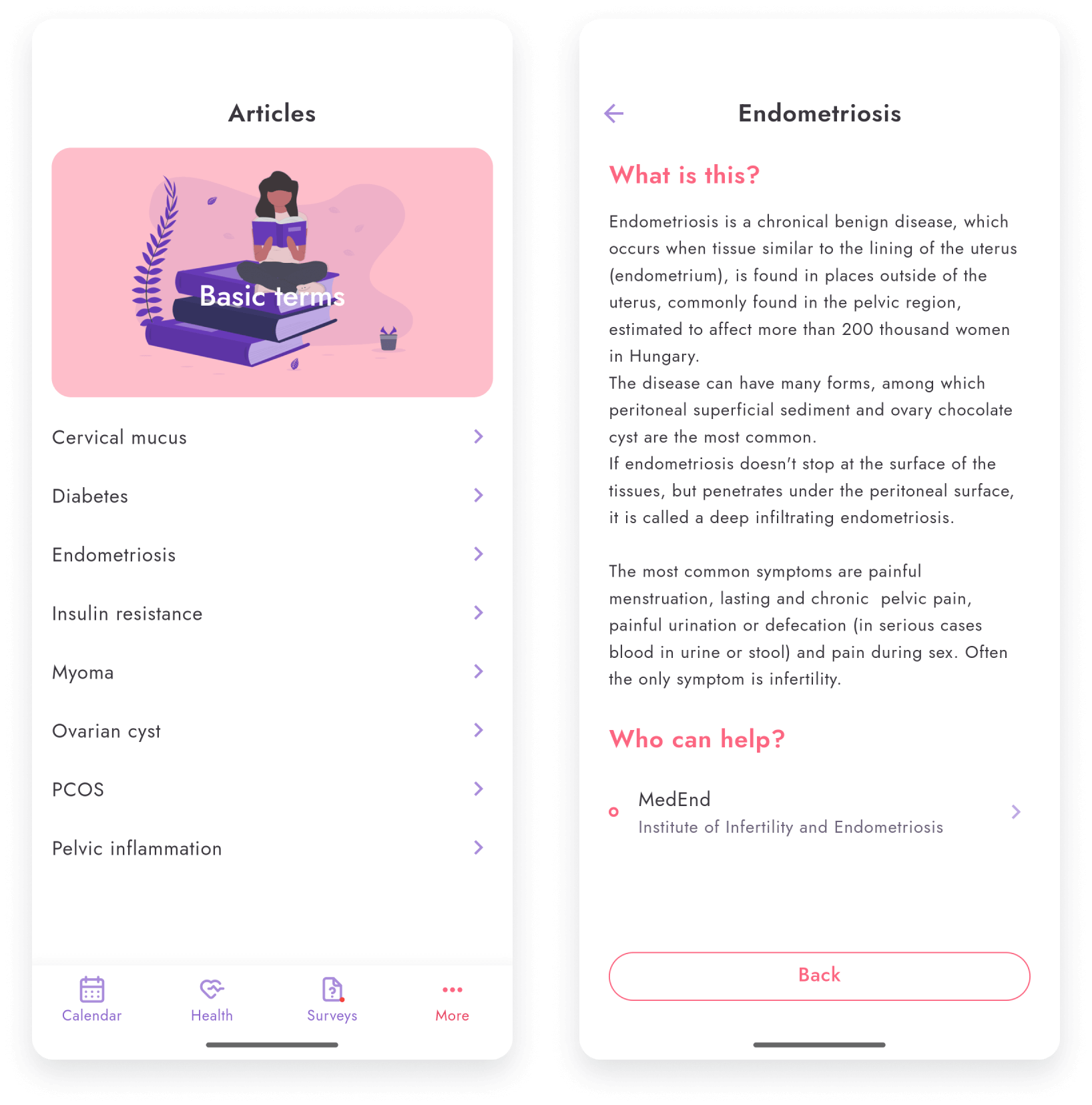
User interviews revealed that after learning the diagnosis, people run to the internet and read every kind of stories about their diseases. They became scared and desperate, as shown above on the user journey. We want to prevent this state. If Lucy suggests a potential risk of any diseases, she also shows relevant information about the problem and competent specialist.
Tools I used
- User interviews
- Usability tests
- Task analysis
- Competitor analysis
- Business analysis
- Wireframing
- Prototyping
- UI design
